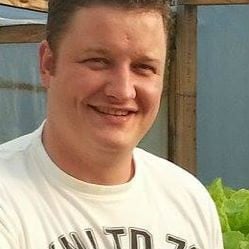By Benjamin Hurter, Buzzworthy Blogs
Tonight, almost 1 billion people around the globe will go to bed hungry, 200 million of them children. That is a pretty daunting number, and it begs the question: Is our current system of agriculture sustainable? And is there enough food available to feed the world’s population? Yes. So how is it that undernourishment kills more people every year than malaria, tuberculosis, and AIDS combined?
Poverty is a factor repeated over and over—many people who go hungry are hungry because they live in areas where food is scarce, or because they can’t afford the food they need. But every year, roughly one-third — 1.3 billion tons — of the food produced in the world is lost or wasted.
Since 2009, $22 billion has been invested in agricultural development worldwide, with a focus on sustainable agriculture. Of the 11 percent of the land suitable for agriculture, 38 percent has become degraded by unsustainable agricultural practices. So where does that leave us?
We need to produce more food with less space, stabilize wildlife habitats to conserve biodiversity, conserve water, save the bees, and rid our farming practices of insecticides. It may sound like a tall order, but the reality is it’s possible.
In January 2011, I attended a lecture on organic farming and was introduced to the basic concepts of aquaponics, a sustainable form of agriculture that combines hydroponics, the growing of plants in water, with aquaculture, the farming of aquatic organisms. Aquaponics has ancient roots, going all the way back to the Aztecs, but information on how to build and maintain systems with modern technology is difficult to find.
It took research and failed attempts, but in March 2012, I designed my first small-scale commercial aquaponics system — and SynergyPonics was born.
As with any farm or garden, the size, complexity, and type of food grown in an aquaponic system varies. There are indoor systems that are small enough to fit on your kitchen counter or are the size of a large fish tank; then there’s the Garden Pool — old backyard swimming pools converted into urban greenhouses. And there are also commercial systems large enough to feed entire communities — that’s where I come in.
The future site of SynergyPonics is located in Kameeldrift, just 12 kilometers from the farmers market in Pretoria, South Africa. Once completed, SynergyPonics will house a system of eight tunnels, covering 950 square meters. And we will have a fully functioning training center, hosting lectures and workshops for people interested in learning about aquaponics. SynergyPonics will be able to supply, install, and provide training for aquaponic systems for schools and private households.
I see a universal need for healthy food that’s affordable, and aquaponics is the best method I’ve seen to provide exactly that. Aquaponic systems use 10 percent of the water used by traditional agriculture. Water is never lost or dumped; instead, water from the aquaculture system is fed to a hydroponics system where the by-products of the fish are broken down by bacteria into nitrates which the plants use as nutrients.
Since aquaponics doesn’t require soil or crop rotation, it isn’t limited by climate or soil conditions. In fact, you can grow and produce high-quality vegetables and fish year-round with less space and higher yields, because nutrients are brought directly to the plants and the root systems don’t have to spread out. There are no weeds to pull, so there is no need to use herbicides. And no pesticides are used because they’d harm the fish. Additionally, as long as proper protocols are followed, there is no chance of contracting E. coli or salmonella from aquaponically grown produce.
As far as many in the growing aquaponic community are concerned, aquaponics is organic. Unfortunately, for a crop to qualify as organic it must be grown in soil, leaving aquaponic systems on the sidelines while we wait for the rules and guidelines to be updated. The interest in aquaponics and sustainable agriculture is there, and every day there are more forums, more Twitter accounts, and more Facebook pages joining the conversation and reaching out to find locally grown, GMO-free, affordable produce.
It’s amazing to realize that while governments are willing to invest in agriculture, they aren’t investing in aquaponics — the one sustainable form of agriculture that fits all of the needs of a growing world population. Imagine an aquaponics system in your local grocery store where you could cut your own herbs or pick fresh tomatoes. Imagine aquaponic systems at schools, providing fresh produce for school lunches, and better yet, hands-on experiments and activities that would teach children about ecosystems, photosynthesis, and plant and fish life.
The possibilities with aquaponics are endless. We’re growing the future, and we hope you’ll join us.
 Benjamin Hurter is the founder of SynergyPonics, an aquaponics farm in Pretoria, South Africa. He’s currently at work on a Kickstarter project, in the hopes of raising the funds he needs for the expansion of SynergyPonics. You can follow him on Twitter @SynergyPonics. Submit your story or essay to Buzzworthy Blogs.
Benjamin Hurter is the founder of SynergyPonics, an aquaponics farm in Pretoria, South Africa. He’s currently at work on a Kickstarter project, in the hopes of raising the funds he needs for the expansion of SynergyPonics. You can follow him on Twitter @SynergyPonics. Submit your story or essay to Buzzworthy Blogs.





Comments are closed.